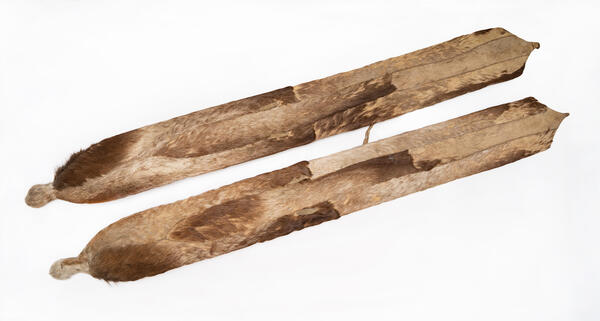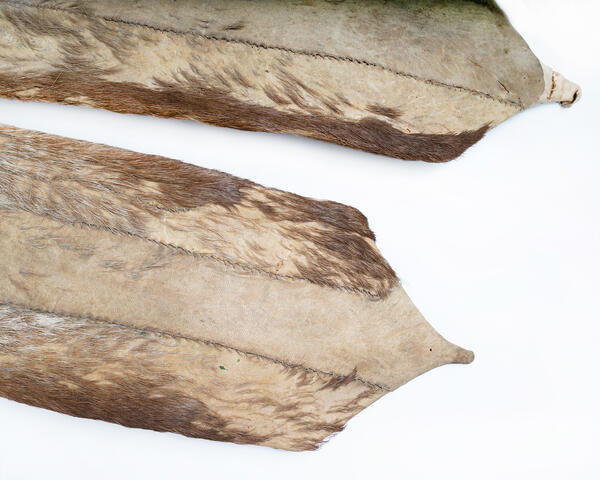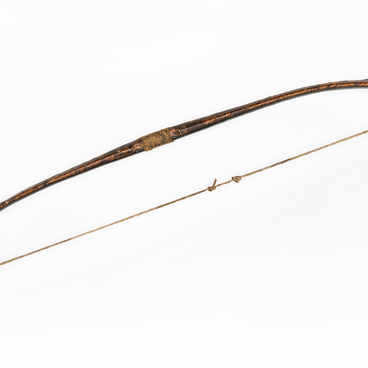The Nanai people, the indigenous people of the Far East, made two types of skis: soksilta and kungilte, or golits. An important distinction of the latter was the absence of fur. Nanai skis had one camber in the middle part, just below the middle to the back. The ends of the skis were pointed.
In different groups of Nanai, the fur that was glued to the soksilta skis was different. In the manufacture of skis, the Ussuri Nanais most often used boar fur, the Amur ones used fur from the Manchurian wapiti (East Asian deer). Seven pieces of skins were glued to the skis in a certain complex order, which made it possible to slide forward silently and quickly, while preventing the ski from sliding back and sideways. All this made it possible to gain an advantage in movement during a long hike.
The inner side of the ski was glued with skins using two muesemse strap loops. The Nanai people moved on skis, well adapted for uneven surfaces, without sticks or with a special tunepun (or tunefun) staff.
Depending on the shape of the upper end, the ski poles were divided into two groups: one of them had a spatula called harip puken or koldyakan, at the end, with which the skier could scrape off the snow stuck to the skis; the other ended in a fork on which a rifle was mounted for aiming.
Going on a skiing trip, the hunter took a tunepun bow staff with him, but on the way he often had to push off with both hands. For this purpose, a hunting buri bow was adapted, at one end of which there was a circle, a ski pole limiter.







